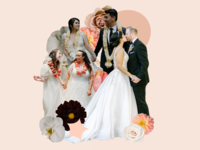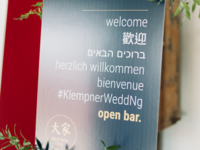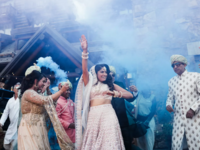Unique Proposal Traditions From Cultures Around the Globe
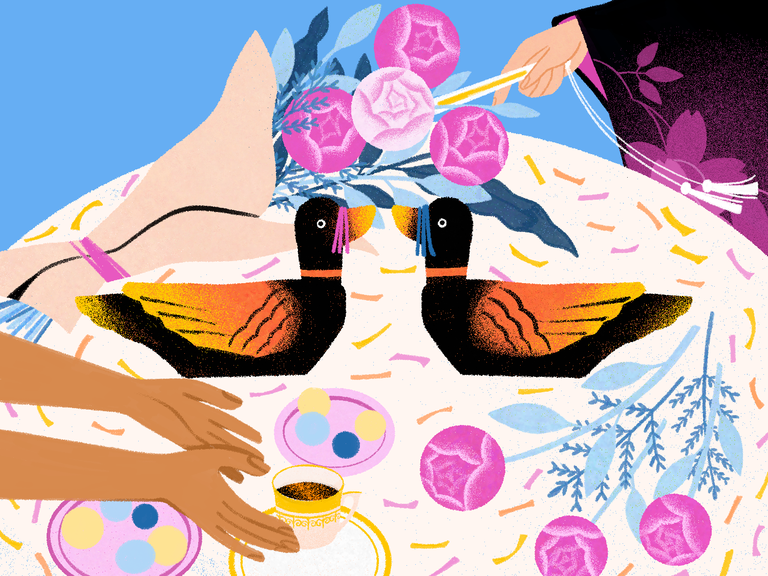
While love is universal, the customs and traditions leading up to the exchange of vows can vary greatly across different cultures. From elaborate ceremonies to symbolic gifts, engagement traditions offer captivating insight into the diverse ways in which the journey toward marriage is celebrated.
Often, when individuals from different backgrounds come together in marriage, a fusion of cultures takes place. You and your partner may find yourselves blending two, three or even four different heritages as you plan your proposal and wedding. Many couples pick and choose what rituals to incorporate or adapt based on their significance in their respective cultures. As a result, couples are constantly creating new ways to honor their heritage and build a harmonious life together that reflects both their own cultural upbringing and that of their future spouse. To explore the beauty of these traditions, we consulted multicultural wedding planners with knowledge about engagement and proposal customs across certain countries and cultures.
Engagement Traditions Around the World to Know: Armenian | Cambodian | Chinese | Colombian | Dominican | Egyptian | Filipino | French | Hawaiian | Indonesian | Japanese | Korean | Peruvian | Puerto Rican | Mexican | Nigerian | Thai | Turkish | Vietnamese
Armenian Engagement Traditions
Tucked between Georgia and Turkey lies Armenia, a nation with deep traditions and a culture heavily centered around the Armenian Apostolic Church. As such, Armenian wedding traditions are heavily based on faith. Traditionally, the groom must ask the bride's family for her hand in marriage through a method known as "Khosk-Armel" or "Khosk-Kap." These follow similar structures, however, a Khosk-Armel is reserved for the groom's immediate family to have a simple meal or drink at the bride's house while a Khosk-Kap involves extended families and a formal dinner. At the meeting, the groom's family arrives with gifts like chocolate and flowers. After introductions, tea is served which indicates the groom's family can formally ask for their daughter's hand in marriage. Typically the groom's eldest present family member asks for permission. If the bride's family gives their blessings they can drink their tea and play music in celebration. Today, it's still pivotal that the groom asks his potential spouse's family for their marriage blessing.
The proposal is often followed by a religious engagement reception, at which the bride wears a red dress and veil and is presented with a ring, a bracelet and a pair of earrings by her future spouse, symbolizing vows of love and faithfulness. obedience.
Cambodian Engagement Traditions
Traditional Cambodian weddings, known for their elaborate three-day celebrations and intricate rituals, hold a central place in Khmer culture. To ask for a bride's hand in marriage, a tradition known as "Hai Goan Gomlom," or the groom's processional, takes place. This ceremonial march sees the groom, accompanied by his family, present trays of gifts (often an array of fruits) to the bride's family as a gesture of goodwill, respect and commitment. Guided by a monk, this ceremony signifies the formal request for marriage and the selection of a favorable wedding date. Couples can also choose to include this tradition in their wedding ceremony, which then involves exchanging rings.
Additionally, Cambodian couples honor their ancestors with a traditional ritual called "Sien Doan Taa." This practice involves offering food and tea to the spirits of ancestors to seek their blessings and protection for the upcoming marriage, inviting them to join in the celebration.
Chinese Engagement Traditions
In traditional Chinese culture, the engagement process involves rituals and customs believed to bring luck and happiness to the couple. As Sonal J. Shah, CEO and founder of Sonal J. Shah Event Consultants, explains, "These traditions help to strengthen family bonds, show respect and goodwill between families, seek blessings for the couple's future and signify the beginning of a new phase in the couple's life together."
"Guo Da Li," or Betrothal Gifts
Gua Da Li is a formal ceremony in which the groom's family presents gifts to the bride's family as a formal proposal of marriage. Shah says, "These gifts symbolize the sincerity of the groom's intentions and gratitude towards the bride's family." Beyond its symbolic importance, Gua Da Li also served as a dowry for the bride's family in ancient China, as women traditionally moved away after marriage.
"Lai See," or Red Packets
In Chinese culture, the lai see tradition involves the exchange of red envelopes containing money during holidays or for special occasions such as graduations, birthdays and, of course, weddings. According to Shah, lai see exchanged during the engagement process is a symbol of good luck, wealth and blessings for the couple's future.
Chinese Tea Ceremony
In Chinese culture, the tea ceremony holds great significance as a traditional ritual symbolizing respect and gratitude. "During the engagement or wedding, the couple serves tea to their parents and elders as a gesture of appreciation and to seek their blessings," says Shah. This ancient custom reflects the couple's reverence for their elders and desires for their consent and support as they embark on their marital journey.
Setting the Date
With the engagement sealed, it's time to pinpoint the ideal day for their wedding celebration. Chinese couples typically seek the guidance of a monk or temple fortune teller to determine a suitable date, considering factors like their birth date and time. Additionally, they might consult the Chinese calendar or almanac to identify auspicious days for their marriage ceremony. This careful selection helps them avoid unlucky dates, ensuring a prosperous start to married life together.
Traditional Wedding Symbols
Symbolic motifs hold great significance in Chinese engagement and wedding customs. "In Chinese culture, the dragon symbolizes the groom while the phoenix represents the bride. These mythical creatures are often incorporated into wedding decorations or attire to symbolize harmony and balance in marriage," says Shah.
Additionally, Shah explains that the "double happiness" character, 囍, is widely used in Chinese wedding decor and invitations to symbolize joy, luck and good fortune for the newlyweds.
Colombian Engagement Traditions
Lively and colorful celebrations that incorporate religious values are things you can expect from Colombian wedding traditions, including the couple's proposal. The groom often delights his bride-to-be with a "serenata," a heartfelt performance where he sings a romantic song, often accompanied by a live band, in front of family and friends. This grand gesture is followed by a lively after-party, a testament to the joyful spirit of Latin American traditions.
The serenata is also the moment when the engagement ring is exchanged. In Colombia, engagement rings often feature emeralds, as the country is one of the world's top producers of these gemstones, making them especially significant. Colombian brides wear their engagement ring on their right hand until the wedding ceremony, at which point it is transferred to the left hand.
During a Colombian couple's engagement and wedding planning, they rely on "godparents" for advice and support. Instead of having a best man or maid of honor, Colombian weddings feature these "godfathers" and "godmothers" who provide invaluable guidance and emotional support. They take on roles that combine the responsibilities of a confidant and a mentor, making the wedding journey both meaningful and celebratory.
Dominican Engagement Traditions
Dominican engagement traditions are rich with cultural significance, deeply rooted in family values, and centered around important customs. One of the key rituals seen across Hispanic cultures is the "Pedida de Mano," where the prospective groom formally asks the bride's parents for their blessing before proposing. Areli Rosales, Director of Sales & Marketing at Cayo Levantado Resort says "Pedida de mano is a moment that underscores the deep respect for family in Dominican culture, highlighting the importance of parental approval and support. During this event, both families come together, not only to bless the engagement but also to unite in celebration, marking the beginning of the couple's journey together."
Another important prewedding tradition is the "Despedida de Soltera," or "Despedida de Soltero" which translates to "farewell to the single life." While it's similar to a bridal shower or bachelor party, in the Dominican Republic, these events are often more family-oriented and involve close friends and relatives. According to Rosales, "It's a time for the couple to receive advice, blessings, and gifts as they prepare for their married life."
During the Despedida de Soltera, specifically, the bride's family symbolically and officially gives her hand in marriage to the groom. The event typically includes speeches and toasts from the bride's family, marking the transition from single life to married life with love and support.
Egyptian Engagement Traditions
Asking for a parent's blessing is commonplace ahead of Egyptian weddings. The two families will then enter a public declaration of their children's intent to marry called "Je Peniot." During the Je Peniot, the two families agree on a "mahr," or dowry, and/or a "shabka," or a gift of gold and precious gems for the bride-to-be. Once both parties accept the terms of the engagement, the "Yekteb Ketaboh", or marriage contract, is signed by the parents and sealed through reading it in the presence of the couple.
The Je Pinort is often followed by an engagement party. At this time, the shabka is presented and the couple exchange rings—a simple gold band for women and a simple silver band for men. They'll wear the rings on their right hand until the wedding day when they'll be moved to their left ring fingers.
Filipino Engagement Traditions
Filipino engagement traditions, as described by Robin Alcoba, the lead wedding planner at At Your Side Planning, revolve around the customary practice of "Pamamanhika," also known as the parental marriage proposal. The practice signifies the first official step after courting toward a traditional Filipino wedding. Accompanied by his parents, the groom visits the bride's parents' home to formally request their permission and blessing to marry, bringing with them "pasalubong," or gifts, which can vary from food to alcohol. During the meeting, the families discuss the wedding date, venue and expenses, with the groom and his family traditionally shouldering all costs of the wedding.
"Today, the tradition still stands where the groom and sometimes his parents will ask the bride's parents permission and blessing to marry," adds Alcoba. "For me, the significance of these traditions is respect. Showing respect to the bride's parents by asking for their blessing before marrying."
French Engagement Traditions
In French culture, an engagement (or "fiançailles") is usually a grand gesture and typically part of an elaborate, romantic trip. Following the proposal, the couple will host an engagement party with their families and friends. The engagement party is an important part of French weddings because it gives the families the chance to get to know each other.
Hawaiian Engagement Traditions
Hawaiian wedding traditions are deeply rooted in the islands' rich cultural heritage and emphasize nature, family and spirituality. Prior to the mid-1800s which saw the development of Hawaiian weddings we're familiar with today, traditions varied between families. Sometimes, marriage was as simple as deciding to share a sleeping mat.
Couples looking to honor Hawaiian traditions should draw inspiration from the land and their ancestors. For instance, leis represent love and the Aloha spirit and are often given to celebrate special occasions and serve as a symbol of affection. Additionally, couples may seek the guidance of a Hawaiian Kahu (minister) to bless their engagement. This can involve the popular pre-wedding event for mainlanders: "kai ho'oma'ema'e," or a type of purification ceremony. A couple will place their hands in a bowl of salt water and wash away negativity and any other worries before the wedding that would otherwise be obstacles in their journey together as spouses.
Indonesian Engagement Traditions
Indonesia, with its diverse tapestry of over 1,300 ethnic groups each influenced by various religious backgrounds, showcases a vibrant spectrum of wedding traditions across the archipelago. Among these cultural communities are the Javanese (who comprise approximately 40% of Indonesia's population) and the Sundanese, who make up just over 15% of the population.
Javanese
In traditional Javanese culture in Indonesia, marriages were often arranged by parents based on factors like class and religion. Traditionally, when a groom's family sought the hand of a prospective bride, they would send envoys to the bride's family to make the proposal. Nowadays, this proposal is often made directly by the groom's parents. Once accepted, crucial details are discussed: For instance, a wedding date and time are carefully decided upon based on auspicious days in the Javanese culture to promote happiness, health and prosperity in the marriage.
Next, the Peningsetan ceremony takes place, marking the exchange of gifts between the families. On the designated day of the marriage proposal, the groom's parents arrive at the bride's family home bearing gifts such as traditional attire, makeup, a waist sash for the bride, fruits, staple foods and a ring set, each representing various wishes for the couple's future.
Sundanese
In Sundanese engagement tradition, the groom's family sends representatives to the bride's family to officially propose the marriage—although, proposals by the groom's parents are increasingly common today. Known as "neundeun," this informal discussion sets the stage for the upcoming engagement ceremony (called "narosan" or "ngalamar").
Once the proposal is accepted, narosan is performed, in which the man brings various symbolic items, such as food, rings, betel nuts and women's clothing, to the bride's family that convey meanings of love, commitment and familial ties.
Another notable pre-wedding custom is the "patukeur beubeur tameuh," where the groom presents a belt or colorful fabric to the bride, symbolizing the bond between them. As the wedding approaches, the groom's family also participates in the "seserahan," where they bring more gifts, money, household items and food to the bride's family, further solidifying the union. This elaborate process reflects the deeply ingrained traditions and values of Sundanese culture, emphasizing family harmony, mutual respect and the celebration of love and commitment.
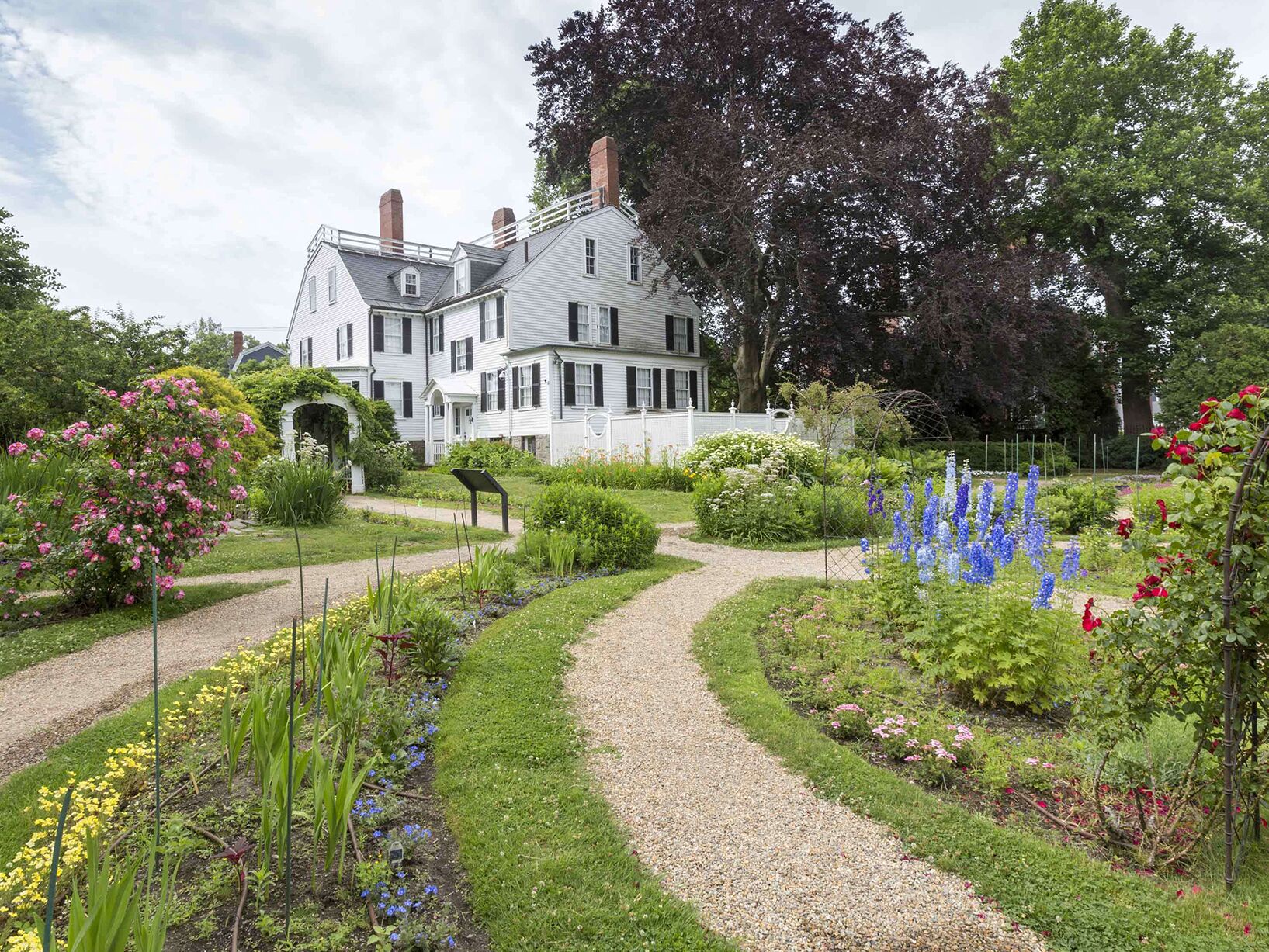
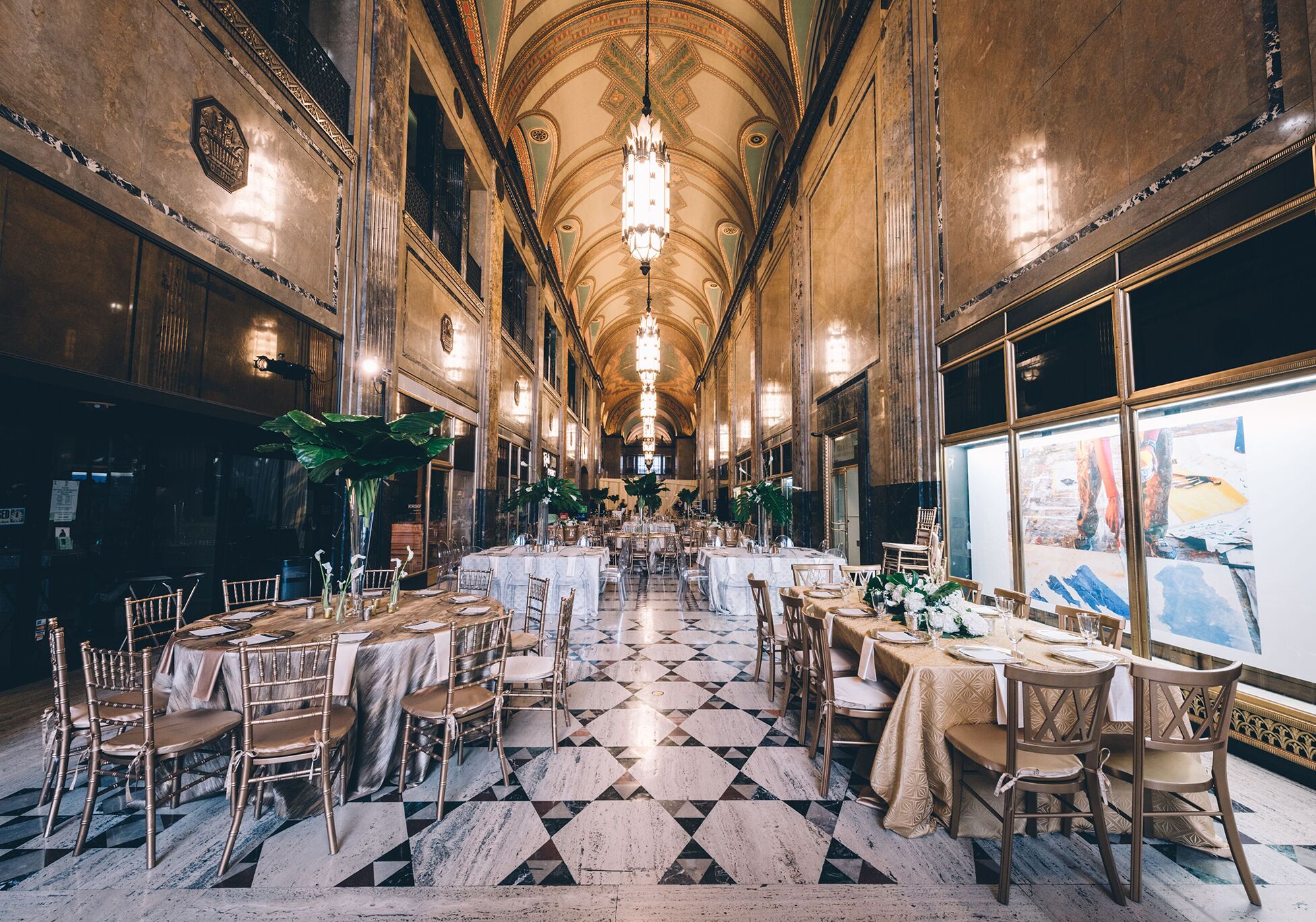
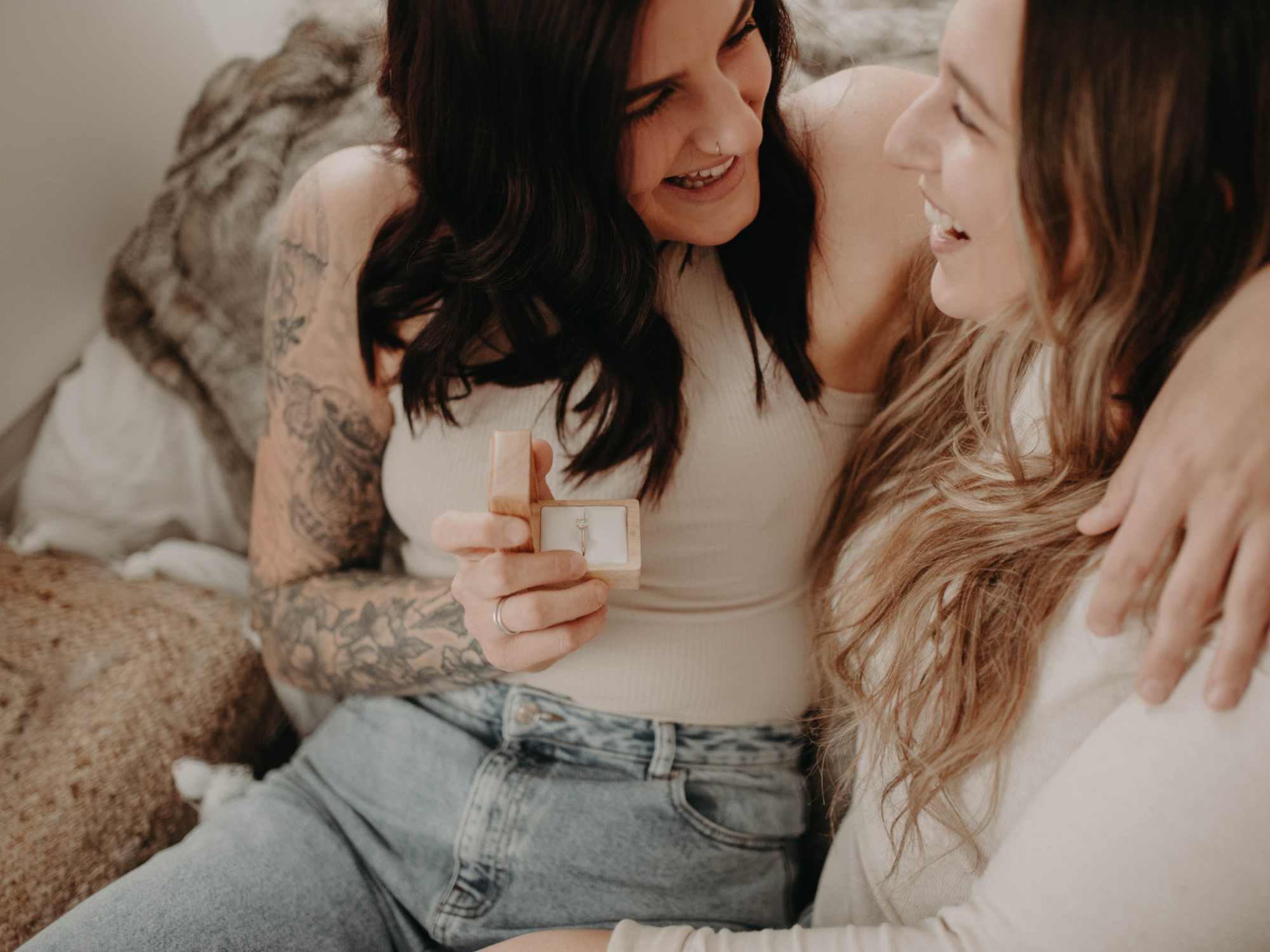
Japanese Engagement Traditions
Japanese culture runs deep with tradition, although modern couples have been influenced by the West and often pick and choose which Japanese wedding traditions best serve them as a pair.
"Omiai," or Japanese Matchmaking
Japanese matchmaking, known as "omiai," is a tradition where a matchmaker, known as the "nakoudo," chooses the couple based on their family's desires, personality and compatibility. While this is less common in modern Japan, some people still use a matchmaker to find a partner and date before making a traditional Japanese proposal.
"Yuinou," or Engagement Ceremony
When a couple has chosen to unite their lives in Japanese culture, they often hold a "yuino," or an engagement ceremony, where their families get together and give certain gifts. These presents are symbolic and often include dried seafood, a pair of hand fans, a white hemp thread, bridal money and at the end, engagement rings. Each one is meant to bring the couple something, such as luck, a long life, fertility or prosperity. After this, the traditional Japanese marriage proposal is complete.
Korean Engagement Traditions
Marriage is not just about joining two people together but also two families. Korean culture celebrates this, and this influence can be seen in Korean wedding traditions.
Meeting the Parents
In the Western world, it is common for partners to meet their significant other's parents multiple times while dating. This is not the case in Korea. Instead, parents usually only meet a partner when an engagement is imminent during a special gathering known as sang gyun rye (상견례). According to Jesse Reing, the owner and CEO of Events by Jesse, this is "a sweet chance for the couple to introduce themselves and make a connection with their future parents."
Bringing Gifts in a Hahm
After a couple has agreed to marry, friends of the groom fill a box (or multiple boxes), known as a hahm, with gifts like jewelry. They sing and dance outside the bride's home until her family comes out and begins "bribing" the groom's friends to hand over the hahm. This is a fun and lighthearted Korean engagement tradition.
The Engagement Party & A Goose
According to Reing, Korean engagement often involves a lively party where the families formally meet each other for the first time. This meal serves a confirmation from both families that they support the couple getting married. Traditional they'll have music, dancing and singing, and the bride-to-be will wear a traditional dress known as a hanbok.
During or shortly after the engagement party, as part of the tradition known as Jeonanyrye or the "presentation of the wild goose," the groom may present his future mother-in-law with a goose—historically real, but now more commonly a wooden replica. Geese are thought to mate for life, so this gesture symbolizes his commitment to his bride-to-be.
Peruvian Engagement Traditions
Peruvian weddings are famous for their vibrant colors and festive spirit, and engagements are no different. The celebrations start with engagement parties, called "la pedidas." These begin with the "pedida de mano," or "the asking," where the groom formally asks the bride's family for her hand in marriage. While this is mainly a cultural tradition, it can also include religious elements, especially for Catholic families, which is the most common religion in Peru. For instance, families might meet with a parish priest, and sometime before the wedding, the couple may receive a simple blessing from the priest and congregation at the end of a Sunday Mass.
Once the engagement is finalized, the couple, their parents, and close relatives gather for a dinner to officially announce the news. This event usually takes place at the bride's home and is more than just a formality—it's a chance for both families to connect, bond, and celebrate the couple's commitment. The party typically includes a meal, drinks and often an exchange of gifts between the families. "La pedida" is considered the first major celebration leading up to the wedding, setting the tone for the joyful events that follow.
Puerto Rican Engagement Traditions
Influenced by the indigenous Taíno people, Spanish colonizers, and African slaves, Puerto Rican wedding traditions, including prewedding ceremonies, have developed into a unique cultural tapestry. Puerto Rican engagement traditions are as vibrant and warm as the island itself and often incorporate couples' families for celebration. Evy Garcia, Vice President of Sales, and Paola Soto, Area Director of Catering at Wyndham Grand Rio Mar Rainforest Beach & Golf Resort and Wyndham Palmas Beach & Golf Resort, shared their experience on what to expect during a Puerto Rican proposal.
Traditionally, the groom-to-be seeks the blessing of the bride's parents before proposing, showing respect for the family's involvement in the relationship. Garcia and Soto explain that proposals can vary widely, "The proposal itself can range from a private, intimate moment to a grand, elaborate event. It often involves a romantic setting, and sometimes family members or close friends might be present to witness and celebrate the moment." The island's pristine beaches, lush scenery, and stunning sunsets create the perfect mood for proposals. The use of flowers, candles, and—most importantly—the element of surprise is central to Puerto Rican engagements. Families often play a key role in planning the surprise, making the moment even more special.
"The main symbol associated with engagements in Puerto Rico is the ring. A specific custom is that the person asking the question will get down on their knees," they say. Following the proposal, families often come together for an engagement party filled with music, food, and dancing. "It's an opportunity for families to bond and start planning the wedding together," they add.
Mexican Engagement Traditions
Mexican culture has a strong emphasis on family, and this can be seen in Mexican wedding traditions. Kenzie Johnson, a PR specialist at KWE Partners shed light on these traditions on behalf of Velas Resorts. "Engagement traditions in Mexico hold deep cultural significance as they are not just about the union of two individuals but also about the joining of families," says Johnson. "The serenata itself is a key symbol in Mexican wedding proposals, representing romance, commitment and the blending of musical heritage with personal love stories."
The "serenata" is more than just a romantic gesture; it's a declaration of love and intent, often witnessed by family and neighbors. A cherished tradition where the suitor serenades their beloved with a mariachi band, the serenata often also involves a huge bouquet of flowers—roses being the most popular—hand-delivered outside their home. If hiring a band and florist feels overwhelming, some planners and hotels (like Mar del Cabo by Velas Resorts) offer serenata proposal packages. "As the mariachi band plays beneath their suite's balcony, the groom-to-be approaches with flowers and the engagement ring. The evening is filled with emotion, reflecting both the couple's love and the cultural heritage of Mexico," Johnston explains. Plus, the celebration continues with a private dinner at the boutique hotel, followed by a sun-soaked day on a yacht, making for a truly unforgettable engagement experience.
Another Mexican engagement custom is that at the start of the wedding planning process, the couple chooses "padrinos" and "madrinas"—also known as sponsors or godparents—to assist with the wedding preparations. They offer guidance, encouragement and support as the couple embarks on their marital journey. They also contribute financially by sponsoring various elements of the wedding, sometimes even hosting an engagement party.
Nigerian Engagement Traditions
Nigeria, which boasts over 371 tribes, including the prominent Igbo, Hausa and Yoruba, is a melting pot of languages, religions and cultures. The grandeur of Nigerian wedding celebrations serves as a unifying custom, bringing together people from various backgrounds to partake in the joyous festivities.
It's a universal custom amongst the three main tribes for groom-to-be to offer an agreed set of household items and cash to the bride's family before the marriage may take place. This is known as the "bride price," or "eru iyawo" in Yoruba and "rubu dinar" in Hausa. The bride price serves a dual purpose: it compensates the bride's family for the economic or labor contributions she provided, and it symbolizes the groom's financial capability to support her and their future family.
Igbo Engagement Traditions
For an Igbo engagement in Nigeria, an Ikuaka or "knocking" process occurs. The prospective groom and his male relatives will formally announce his intention to marry the bride by knocking on her family's door and presenting them with gifts such as Kola nuts and alcoholic beverages.
Yoruba Engagment Traditions
In Yoruba culture, an engagement begins with an introduction ceremony, where the families of the bride and groom meet for the first time. The groom's family brings modest gifts such as fruits, yams and wine, and the bride's family hosts them for a simple meal. This intimate event is only attended by close relatives and focuses on formal introductions like sharing basic information about each other. Additionally, the families may discuss and agree upon the date for the official wedding ceremony.
Hausa Engagement Traditions
A traditional marriage in the Hausa tribe begins when a groom seeks his parents' approval. If they agree, they proceed with "Na Gani Ina so," meaning "I have found and I love it." The groom, along with his family, visits the future bride's home to express their intention to her family, bringing along gifts like Kola nuts, salt, sweets and chocolate. The bride's parents then inquire about the groom's morals, religious beliefs, social background and family history. If they accept the gifts, it signifies their approval of the marriage.
Thai Engagement Traditions
In traditional Thai weddings, pre-wedding events and the ceremony unfold over several days. However, in modern society, the festivities are condensed into a single day to cater to the convenience of both couples and their guests.
In the Buddhist tradition, the first step in a Thai wedding is called "making merit." Couples invite an odd number of monks, typically nine for luck, to receive food offerings. In return, the monks sing, pray and bless the couple for a happy, healthy and wealthy life.
Once the monks bless the union, the groom will lead a parade of his family and friends carrying "khan maak," ขันหมาก, or engagement trays, to the bride's house. The items on the trays are "sinsod," สินสอด, or a symbolic dowry, plus an engagement ring, betel nuts, incense sticks and candles, grains and other auspicious items that represent love, prosperity, fertility and longevity.
The groom can't simply enter the bride's family's home once the parade is over though. He must pass through symbolic "gates" which are actually belts and chains held by the brides' female relatives and friends. The groom provides money envelopes as a "toll" and completes funny quests to move through each gate at the door.
Turkish Engagement Traditions
According to Jesse Reing, engagement customs and rituals in Turkey are rich in tradition. While not all modern couples will follow each of these Turkish proposal traditions to a T, they incorporate certain aspects of these cultural rituals. them to create the engagement they want.
When a potential groom is ready to propose, he gathers his family and walks to the bride's home with gifts, like flowers, candy and other presents in a process known as the "kiz isteme." Reing add, "In some regions, relatives may request cash for a symbolic door-opening ritual upon entering the house."
Before official approval for the match is given, the bride-to-be will bring a cup of coffee to her partner that she has seasoned with salt (and sometimes pepper) instead of sugar. If her probable groom can sip the coffee without making a face, it is seen as a good sign and a blessing is given to move forward with the engagement.
Soon after, close relatives of the couple get together for the "söz kesmek." During this promise ceremony, the couples each wear rings on their right hand that are connected by a red ribbon. Then, an older male relative speaks to the couple and gives their well wishes. When he is done, he cuts the ribbon and the pair is officially engaged. At the wedding ceremony, the rings are moved from the right to left hands.
Vietnamese Engagement Traditions
"Engagement traditions hold significant cultural and familial importance in Vietnamese communities," says Khanh P. Duong, a multi-hyphenate bilingual wedding planner and master of ceremonies powerhouse. "They serve as a way to strengthen familial ties and honor traditions passed down through generations."
In Vietnamese culture, a traditional marriage proposal is known as "Lễ đính hôn or Lễ hỏi." "In Vietnamese culture, the engagement process typically involves a formal meeting between the families of the bride and groom. During this meeting, both families discuss important matters such as the marriage proposal, wedding date and other arrangements," explains Duong. It can occur anywhere from a year prior to the night before the wedding.
The Lễ đính hôn or Lễ hỏi starts with a processional where the groom's parents, himself and additional friends and family carry trays (called "Mam Qua") filled with gifts to the bride's house. Duong notes that the gifts are often betel leaves, areca nuts and tea "The exchange of betel leaves and areca nuts symbolizes respect and acceptance between the two families. Tea is also exchanged to symbolize purity and respect."
Once inside the home, the families bless the union and the groom and bride partake in a Vietnamese tea ceremony. This starts by honoring ancestors. Couples will display portraits, light candles, burn incense sticks and respectfully bow at their worship tables. They'll then serve tea to their parents and elder relatives to thank them for their guidance. Sometimes, the couple also pours tea for all their guests in exchange for well-wishes, marriage advice and gifts.
Today, Duong helps couples host many of these celebrations with a modern twist. "During a Vietnamese tea ceremony, the wedding party kicked it up a notch with some really fun door games!" she recalls. "It's all about having a blast!"
Lauren Nowack contributed to the reporting of this piece.


